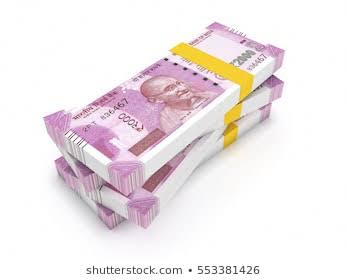UGC NET ,UPSC and other Competitive exams Concept of Cash and Money (Macroeconomics)
 |
| Money Concept |
Cash is any thing or obvious record that is commonly acknowledged as installment for merchandise and ventures and reimbursement of obligations, for example, charges, in a specific nation or financial setting.
The fundamental elements of cash are recognized as: a mode of trade, a unit of record, a store of significant worth and now and then, a standard of conceded payment.Any thing or irrefutable record that satisfies these capacities can be considered as cash.
Cash is truly a new market wonder building up an item cash, yet almost all contemporary cash frameworks depend on fiat money.Fiat cash, similar to any check or note of obligation, is without use an incentive as a physical ware. It determines its incentive by being announced by an administration to be lawful delicate; that is, it must be acknowledged as a fullment inside the limits of the nation, for "all obligations, open and private"
Fake cash can make great lose its worth.
The cash supply of a nation comprises of money (banknotes and coins) and, contingent upon the specific definition utilized, at least one sorts of bank cash (the equalizations held in financial records, investment accounts, and different kinds of ledgers). Bank cash, which comprises just of records (generally mechanized in present day banking), frames by a long shot the biggest piece of expansive cash in created nations.
Root orgin
"Money" is accepted to begin from a sanctuary of Juno, on Capitoline, one of Rome's seven slopes. In the antiquated world Juno was regularly connected with cash. The sanctuary of Juno Moneta at Rome was where the mint of Old Rome was found. The name "Juno" may get from the Etruscan goddess Uni (which signifies "the one", "one of a kind", "unit", "association", "joined together") and "Moneta" either from the Latin word "monere" (remind, caution, or educate) or the Greek word "moneres" (alone, interesting).
In the Western world, a pervasive term for coin-cash has been specie, coming from Latin in specie, signifying 'in kind'
Capacities
In Cash and the Instrument of Trade (1875), William Stanley Jevons broadly broke down cash as far as four capacities: a mechanism of trade, a typical proportion of significant worth (or unit of record), a standard of significant worth (or standard of conceded installment), and a store of significant worth. By 1919, Jevons' four elements of cash were outlined as
Cash's a matter of capacities four,
A Medium of Exchange
1 )Measure of Value
2 ) Standard of deferred payment
3 ) Store of Value
Mode of trade
At the point when cash is utilized to halfway the trading of merchandise and ventures, it is playing out a capacity as a mechanism of trade. It in this way dodges the wasteful aspects of a bargain framework, for example, the "fortuitous event of needs" issue. Cash's most significant utilization is as a technique for contrasting the estimations of unique articles.
Proportion of significant worth
A unit of record (in financial aspects) is a standard numerical money related unit of estimation of the market estimation of products, administrations, and different exchanges. Otherwise called a "measure" or "standard" of relative worth and conceded installment, a unit of record is an essential for the definition of business understandings that include obligation.
Cash goes about as a standard measure and basic division of exchange. It is therefore a reason for providing and bartering of cost estimates. It is essential for creating productive bookkeeping frameworks.
Standard of conceded installment
A "standard of conceded installment" is an acknowledged method to settle an obligation – a unit where obligations are designated, and the status of cash as lawful delicate, in those locales which have this idea, expresses that it might work for the release of obligations. At the point when obligations are designated in cash, the genuine estimation of obligations may change because of swelling and flattening, and for sovereign and worldwide obligations by means of degradation and depreciation.
Store of significant worth
To go about as a store of significant worth, a cash must have the option to be dependably spared, put away, and recovered – and be typically usable as a mechanism of trade when it is recovered. The estimation of the cash should likewise stay stable after some time. Some have contended that swelling, by lessening the estimation of cash, reduces the capacity of the cash to work as a store of significant worth.
Properties
Fungibility: its individual units must be fit for shared substitution (i.e., compatibility).
Sturdiness: ready to withstand rehashed use.
Compactness: handily conveyed and shipped.
Cognizability: its worth must be handily distinguished.
financial aspects, cash is any budgetary instrument that can satisfy the elements of cash. These budgetary instruments together are all things considered alluded to as the cash supply of an economy. At the end of the day, the cash supply is the quantity of monetary instruments inside a particular economy accessible for buying products or administrations. Since the cash supply comprises of different budgetary instruments (generally cash, request stores and different sorts of stores), the measure of cash in an economy is estimated by including these money related instruments making a fiscal total.
Current fiscal hypothesis recognizes among various approaches to quantify the load of cash or cash supply, reflected in various sorts of fiscal totals, utilizing a classification framework that centers around the liquidity of the budgetary instrument utilized as cash. The most ordinarily utilized financial totals (or kinds of cash) are expectedly assigned M1, M2 and M3. These are progressively bigger total classes: M1 is money (coins and bills) in addition to request stores, (for example, financial records); M2 is M1 in addition to bank accounts and time stores under $100,000; and M3 is M2 in addition to bigger time stores and comparative institutional records. M1 incorporates just the most fluid monetary instruments, and M3 moderately illiquid instruments. The exact meaning of M1, M2 and so on might be distinctive in various nations.
Another proportion of cash, M0, is likewise utilized; in contrast to different measures, it doesn't speak to genuine buying influence by firms and families in the economy.M0 is base cash, or the measure of cash really gave by the national bank of a nation. It is estimated as cash in addition to stores of banks and different foundations at the national bank. M0 is likewise the main cash that can fulfill the hold prerequisites of business banks.
Production of cash
In current monetary frameworks, cash is made by two strategies:
Legitimate delicate, or limited cash (M0) is the cold hard cash made by a National Bank by stamping coins and printing banknotes.
Bank cash, or wide cash (M1/M2) is the cash made by private banks through the account of credits as stores of obtaining customers, with halfway help showed by the money proportion. Right now, bank cash is made as electronic cash.
Agent Cash
In 1875, the English financial specialist William Stanley Jevons depicted the cash utilized at the time as "delegate cash". Delegate cash is cash that comprises of token coins, paper cash or other physical tokens, for example, declarations, that can be dependably traded for a fixed amount of an item, for example, gold or silver. The estimation of delegate cash remains in immediate and fixed connection to the ware that backs it, while not itself being made out of that item.
Fiat cash or fiat cash is cash whose worth isn't gotten from any inherent worth or assurance that it very well may be changed over into an important product, (for example, gold). Rather, it has esteem just by government request (fiat). For the most part, the legislature proclaims the fiat cash (normally notes and coins from a national bank, for example, the Central bank Framework in the U.S.) to be lawful delicate, making it unlawful not to acknowledge the fiat money as a methods for reimbursement for all obligations, open and private.
Some bullion coins, for example, the Australian Gold Piece and American Bird are legitimate delicate, be that as it may, they exchange dependent available cost of the metal substance as an item, as opposed to their lawful delicate assumed worth (which is generally just a little portion of their bullion esteem).
Stay Tuned Subscribed for next arrangement of CASH
Please note For all Economics students from now you can post your article on Economics Topic Which can be helpful to all Net Upsc and other Economics students on iemsjaipur@gmail.com .If your post will be selected it will be posted with your Name on the site.kindly share with all of your freinds so that all students can be benefitted.





This comment has been removed by a blog administrator.
ReplyDelete